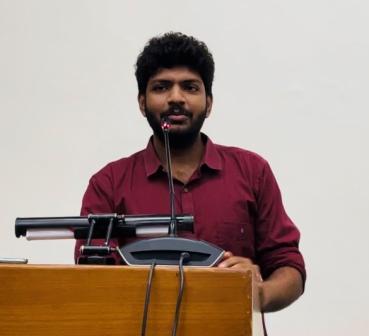Amir Hyder Khan
In a pathbreaking judgement from the Supreme Court of India on 1 August 2024, the 7-judge constitutional bench led by Chief Justice of IndiaDr Justice D Y Chandrachud had stated that the sub-classification the Scheduled Castes (SC) and Scheduled Tribes (ST) was permissible. This judgment was welcomed by several political parties and social groups but resulted in a huge outrage among ‘dominant’ sections of SCs and STs. This judgement is very crucial in that it upholds the right of the state to carry out the sub-categorisation, which in other words, the nation wide demand of “National Caste Census” will be no more a significant stipulation for the Union government.
A brief recap
Historically, the concept of affirmative action, widely called ‘Reservation’, was introduced in India on 16 September 1921, as Communal G.O. for marginalised communities in Madras Presidency which was then led by Justice Party.
Then reservation became widely known when Dr B R Ambedkar was fighting for the Poona Pact which gave political reservation to the SC/ST. After a distasteful exchange of opinions, finally in 1932 both Ambedkar and Gandhi signed the pact, which changed the political discourse of India. Later in 1950, when Constitution was formulated by the committee led by Dr B R Ambedkar, again ‘Reservation’ became a sensational phenomenon when it was introduced in employment at first. Later the reservation in educational opportunities for the marginalised was brought as a result of Periyar’s massive agitation in Tamil Nadu. This demand was added in the first constitutional amendment in 1951 by the Prime Minister Jawaharlal Nehru.
There was a huge outcry among upper castes for implementing reservations as a constitutional act. Apparently, ‘The Reservation’ became a very contentious topic to be spoken about. The Other Backward Classes (OBC) got their due share of representation only after implementation of 27% of reservation as per the Mandal commission report in 1990 by then Prime Minister V P Singh.
Where it all started?
Now, it’s been 74 years since the reservation was implementation for the marginalised communities in India. In this scenario, why the Supreme Court of India must deliver a judgement which suggested internal reservation for sub-castes in SC/ST who are relatively more deprived. The history of internal reservation for sub-castes case should be first known briefly to understand the verdict. The ‘Madiga’ one of the SC communities in Telangana and Andhra Pradesh demands sub-classified reservation for themselves in job and educational opportunities. But their demand was opposed by the ‘Mala’ community also from SC. The ‘Madiga’ claim that, they are very backward in the basis of education and growth and this is because of inadequate share in reservation which is highly benefitting the ‘Mala’.
This case arose from the India’s first sub-caste reservation among SC in Punjab. The ‘Balmikis’ and ‘Mazhabis’ Sikhs were given 50% of quota in SC reservation for jobs in Punjab. In 1975, then Congress Chief Minister Giani Zail Singh issued this circular making a historical impact. But, later, this order was quashed by the High Court of Punjab and Haryana. Further in E.V. Chinnaiah vs State of Andhra Pradesh case in which a 5-judge Supreme Court of India bench struck down the Andhra Pradesh Scheduled Castes (Rationalisation of Reservations) Act, 2000 for being violative of the right to equality. A huge distress was caused by the protest by these both communities which blamed the ‘Ravidassia’ community’s hold on power.
Subsequently the same year, then Punjab Chief Minister Amarinder Singh brought a bill in the assembly to ‘protect and safeguard the reservation rights of the Balmikis and Mazhabi Sikhs’. Thus, the Punjab Scheduled Castes and Backward Classes (Reservation in Services) Act, 2006 was enacted. Hence, both the communities were assured adequate proportional representation by this act.
After this act, the government of Tamil Nadu in 2008 led by then Chief Minister Kalaingar M Karunanidhi announced sub-category reservation for the ‘Arunthathiyar’ community within SC category of Tamil Nadu. The ‘Arunthathiyar’ community faced severe isolation in education opportunities and development. They had a very negligible representation in SC reservation until the implementation of the SC (Arunthathiyar), also known as SC(A). Based on the recommendations of M.S. Janarthanam committee the ‘Arunthathiyar’ community were given 3% reservation out of 18% of total SC reservation in Tamil Nadu.
Who are challenging the sub-classification of SC/ST?
In spite of several cases, where the backwardness of the marginalised communities within the SC/ST community is visibly discerned to others, why are some people from ‘other’ SC/ST groups are ‘blue’ with this sub-categorisation judgement? Who are they? And what’s their share of representation in SC/ST reservation?
The paroxysm of these people for past few days in social media and other platforms can contemplate various moderations. The major one is the fear of losing their ‘striking share’ of representation in SC/ST reservations. This concludingly shows the stronghold of numerically dominant strong SC/ST communities like Mahar, Jatav, Paswan and others. A few parties like DMK, CPI, CPI(M), VCK and others have welcomed the sub-classification verdict but many decided to stay mum and a few have dissented. Those parties who haven’t expressed any views have stood indirectly with the ‘dominant’ SC/ST groups.
The silence of major political parties regarding sub-classification shows the political hold of the certain SC/ST groups and also the fear of losing their vote banks.
Myriads of Ambedkarites, academicians and student activists from reputed institutes like Jawaharlal Nehru University (JNU), Delhi University (DU) and other institutions have come out criticising the court’s verdict by calling it a Manuwadi point of view. Again, by analyzing these scholars and activists, we can club them as ‘Blue house’ of the right-wing forces who belong to either the stronger SC/ST groups or those who have unascertained knowledge about the reality of extant caste system in India.
Conduct of caste census
The article 15(4) and 16(4) of the Constitution fortifies the reservation for SC/ST communities in education and jobs, but the question where did Constitution makers acquire the data of the population? In 1930, the SECC (Socio-Economic and Caste Census) was conducted by the British Raj which aimed to collect information on the economic and social status of Indian society, both in rural and urban areas, to identify indicators of deprivation.
The SECC data was handed-down in 1950, hence the matrix of reservations was figured. Since 1930, there was no census conducted in order to enumerate the population of each community and appraise their growth. For 94 years now, the demand for caste census has been incessantly raised by many political parties and citizens across India. The hesitation of the government towards caste census is causing concern among the marginalised sections. If at all a caste census is conducted then it will raise concerns among the upper castes. Because their sparse share in the population would be substantiated. And the next stage after the conduct of caste census would be the implementation of proportional representation, this would lead the upper castes’ share in jeopardy. Hence the sub-classification of SC/ST communities must be done with the latest caste census data with socio-economic survey which should have unerring parameters.
The creamy layer question
In this 7-judge constitutional bench of Supreme Court of India had directed the states to decide on the creamy layer in SC/ST reservations. This statement faced wide criticism among everyone for equating reservations which were brought for socially deprived to other factors which weren’t specifically stated by the bench. The existing creamy and non-creamy layers in OBC has always faced opposition from the OBC communities. The reservations should not be bracketed with economic factors. For economically weaker sections, there are some other alternatives for removal of poverty which the state must ensure and ‘reservation’ is definitely not the solution. In this casteist societal setup, the marginalised sections aren’t being considered equal despite being economically well to do. This proves that ‘reservation’ should be only socially inclined and not economically.
The knot which should be noticed in the statement is, the bench specifies that the criteria for the creamy layer isn’t mandatory to stick with economic parameters. Hence the respective states can come up with new parameters. This indirectly can lead to devastating consequences to the idea of ‘affirmative action’.
The right demand on sub-classification
The criticism of sub-classification of SC/ST reservation must have a sensible approach regarding this verdict. If at all, the judgement should be criticised then they should ask about implementation of sub-classification in OBC too. This demand will emphasize the idea of social justice instead of all the outcry on this verdict which won’t have any relevance. The Bahujan Samaj Party (BSP) has criticised this judgement stating that it would lead to divisions within the SC/ST community, but they have failed to understand that this verdict was given because of the differences between sub-categories where the dominant groups are over represented in SC/ST reservations.
The so-called ‘Social Justice’ warriors and woke ‘Ambedkarites’ in the academic spaces who have been showing indignation must understand the idea of Dr B R Ambedkar and his vision towards annihilation of caste. He would have welcomed this historic verdict of sub-classification of SC/ST reservation because he had always stood with the deprived. The ‘Reservation’ must benefit each and every section of the deprived society, if not then the idea of affirmative action in India is to be considered as a huge miscarriage. The ‘reservation’ is for all the SC/ST communities and does not limit to any specific ‘dominant’ group within them. The sub-classification is to initiate all the backward sections in SC/ST communities towards their journey on thriving path. The concept of “Social Justice” is about upliftment of the suppressed and oppressed of the society.
~~~
Amir Hyder Khan from Pondicherry is an undergraduate student at Jamia Millia Islamia, pursuing a Bachelor of Architecture. He possesses a profound interest in Indian Polity and questions Caste, Gender and Class inequalities, demonstrating a commitment to critically engaging with and addressing the complex challenges within contemporary society.










